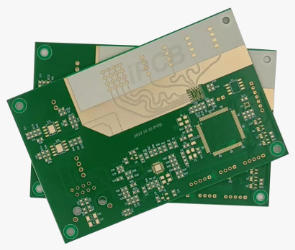In modern electronic devices, board to wire connectors are key components for reliably connecting circuit boards to external cables or devices. These connectors are widely used in consumer electronics, automotive electronics, industrial automation, medical equipment, and other fields, ensuring efficient signal transmission, power distribution, and system modularity.
PCB-to-wire connectors come in a wide variety, but can be categorized according to application requirements. Terminal blocks are the most common type, suitable for applications requiring frequent disassembly, such as industrial control equipment. They are characterized by ease of installation and support for high current, but they occupy a large space. Pin headers and sockets are widely used in consumer electronics, such as connecting computer motherboards to peripherals, and feature high density and compactness. IDCs (Insulation Displacement Connectors) achieve quick connection by piercing the cable insulation and are commonly used in communications equipment, suitable for mass production. Furthermore, modular connectors, such as the Molex Mini-Fit Jr. and TE Connectivity's AMP series, have emerged in recent years and are widely used in automotive and home appliance applications due to their standardized design and high reliability. When designing a board to wire connector, multiple factors must be considered. First and foremost is current and voltage carrying capacity. The connector's current rating is directly related to the pin material and size. For example, copper alloy pins are used for power transmission to reduce resistance, while signal transmission prioritizes pin spacing to minimize crosstalk. Second, mechanical strength and durability are important. Connectors must withstand frequent mating and unmating cycles, and high-quality connectors typically guarantee a mating and unmating lifespan of more than 5,000 cycles. Furthermore, environmental compatibility is crucial. In automotive and aerospace applications, connectors must be resistant to moisture, dust, and high temperatures, with IP67 or higher being a common requirement. Finally, PCB layout compatibility is crucial. The connector's pin pitch must match the PCB pad design to avoid soldering difficulties or signal integrity issues.

Board to wire connector
Board to wire connector have diverse application scenarios, covering a range of power requirements from low to high. In consumer electronics, such as smartphones and laptops, micro connectors (such as 0.8mm pitch FPC connectors) are used to connect displays or batteries to meet miniaturization requirements. In automotive electronics, connectors must withstand vibration, high temperatures, and chemical corrosion, and are commonly found in in-car entertainment systems or battery management systems. For example, the battery management module of a new energy vehicle utilizes a high-current connector to ensure stable transmission of currents exceeding 100A. In industrial automation, terminal block connectors are commonly used to connect PLCs (programmable logic controllers) and sensors, enabling rapid maintenance and module replacement. Medical equipment, for example, places extremely high demands on connector reliability. Signal connectors in MRI equipment, for example, must ensure low noise and high-precision transmission.
Quality control of board to wire connector is crucial during the manufacturing process. Soldering processes (such as surface-mount soldering or through-hole soldering) must ensure a secure connection between the connector and the PCB, preventing cold joints or loose connections. Testing typically includes electrical performance testing, mechanical strength testing, and environmental compatibility testing. For example, high-temperature cycling testing verifies connector performance in environments ranging from -40°C to 125°C. Furthermore, international standards such as IPC-A-610 provide guidance on connector soldering quality and visual inspection to ensure product compliance with industry requirements.
With the advancement of the electronics industry, board-to-ire connectors are evolving towards miniaturization, high speed, and intelligentization. The demand for high-speed signal transmission in 5G communications and Internet of Things (IoT) devices is driving connector miniaturization and low-loss designs. For example, connectors using differential signal pairs support speeds exceeding 10 Gbps. Intelligent connectors with integrated sensors or chips for connection status monitoring are widely used in Industry 4.0 equipment. Furthermore, environmental trends are driving manufacturers to adopt lead-free materials and recyclable designs to comply with RoHS and REACH standards. In the future, the application of new materials such as graphene may further enhance connector conductivity and durability.
Board to wire connectors are a critical link in electronic systems, and their performance directly impacts device reliability and functionality. By carefully selecting connector types, optimizing designs, and integrating them with application requirements, engineers can ensure system stability and efficiency. With technological advancements, connectors will continue to innovate in miniaturization, performance, and intelligence, injecting new impetus into the electronics industry. Whether in consumer electronics or industrial applications, board to wire connectors will play a vital role in the future wave of intelligentization.